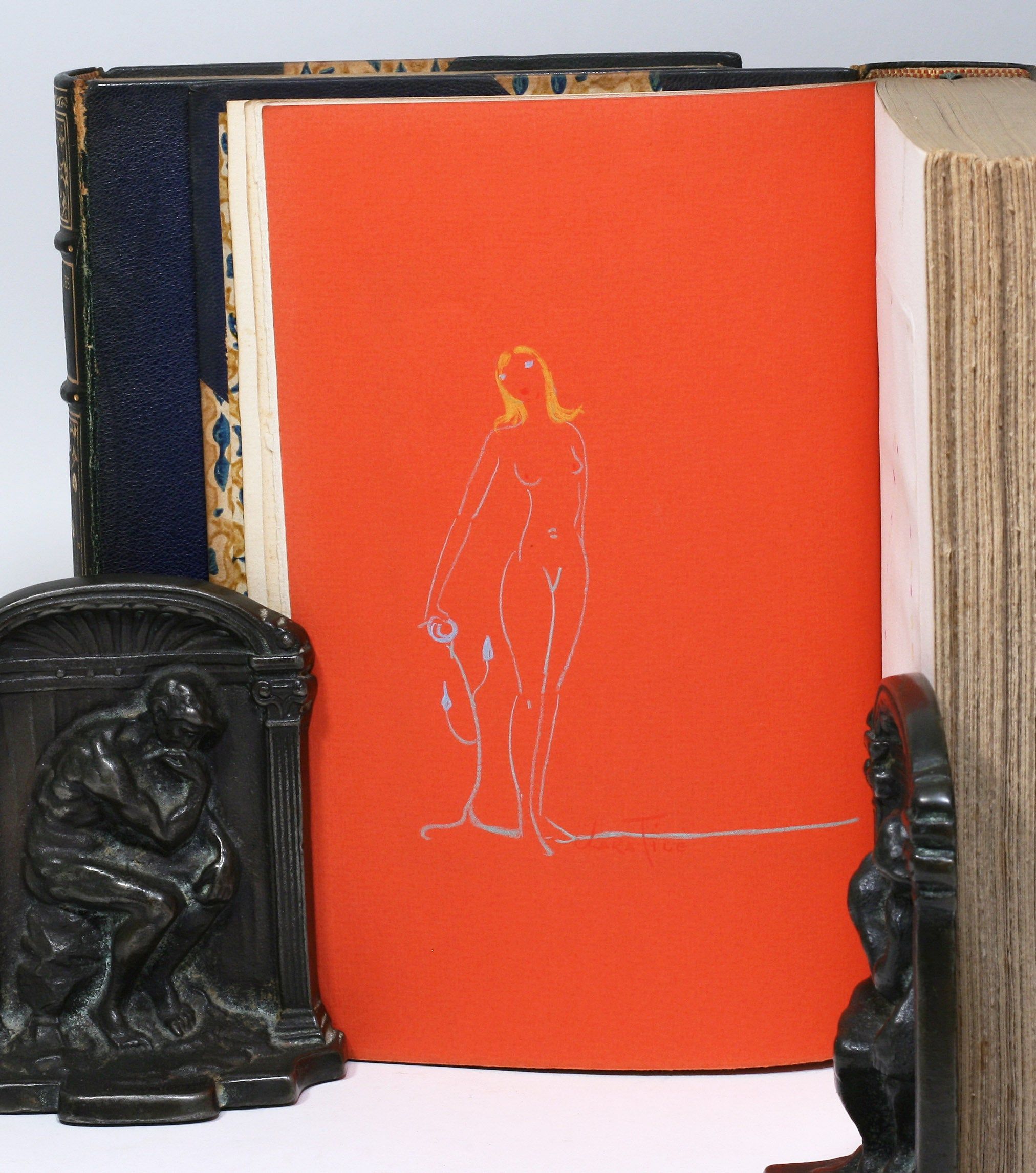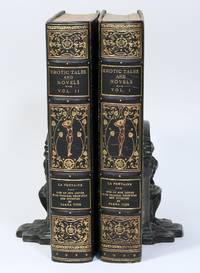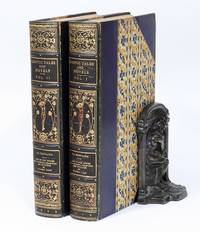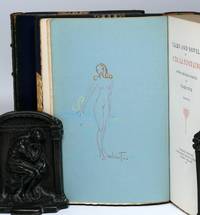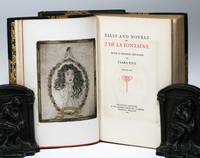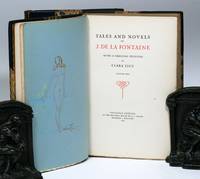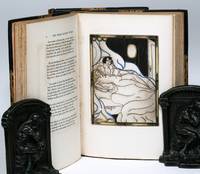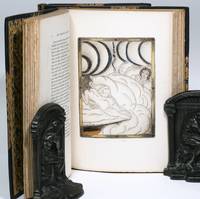Tales and Novels of J. De La Fontaine [Erotic Tales and Novels]
- SIGNED Original publishers 3/4 morocco
- Nijmegen, Holland: G. J. Thieme, 1929
Nijmegen, Holland: G. J. Thieme, 1929. first. Original publishers 3/4 morocco. Very Good. TICE, Clara (Illus). FIRST TICE EDITION – ONE OF ONLY APPROXIMATELY FIVE COPIES – WITH TWO ORIGINAL SIGNED CRAYON DRAWINGS AND TWELVE ORIGINAL ETCHINGS HAND COLORED BY TICE. Easily the most extravagant of Clara Tice’s illustrated works, the extra-limited edition (approximately 5 copies) of Tales and Novels showcases the remarkable abilities of a revolutionary woman.
Born in 1888, in Elmira, New York, Tice lived and worked at a time when female illustrators were a tiny minority whose artistic output was tightly constrained. Inspired by the views of her progressive parents, she used erotic and transgressive art to rebel against bourgeois boundaries and gender norms. In 1915, Anthony Comstock, then the head of the New York Society for the Suppression of Vice, led a raid on various “bohemian” institutions and confiscated the art. At the last minute, Tice’s pieces were purchased by a patron, saving them… and landing her on the front page of the New York Tribune.
Thus began her rise to stardom. Marcel Duchamp befriended her, and Tice was welcomed into the exclusive Arensberg circle of avant-garde artists, which included luminaries such as William Carlos Williams and Wallace Stevens. Dadaism soon became a focus of the group, and Tice embraced its iconoclastic approach to visual art. Even Tice’s lifestyle reflected her aesthetic philosophy. Her knee-length dresses traded conservatism for comfort and rebellion, and her bobbed hair started a trend in the Village. She died in Queens, in 1973, having been christened “the Queen of Greenwich Village,” leaving behind a legacy that shaped New York and the art world.
The highly decorated publisher's spines (with gilt nude lady in Tice's style in center) notes that this is "One of five copies with original drawings and etchings by Clara Tice." This copy, however, does not have the pasted in limitation slip noting the limitation and presenting it to the "Falstaff Connoisseur Collectors" seen in other copies. Otherwise it matches the other copies on record. It is possible it is an "extra" copy (bringing the total to slightly more than five) or that not all five were presented to the "Falstaff" collectors. Either way it is (obviously) exceedingly rare – we have not been able to locate five other sets.
Nijmegen, Holland: Privately printed at the printing house of G. J. Thieme, 1929. Quarto (approx. 9.5 x 6.5 in), publisher's deluxe three-quarter blue morocco with highly decorated spines and marbled boards; patterned edpapers, top edges gilt. Some mild scuffs to binding, interior fine. An exquisite and exceedingly rare set.
Born in 1888, in Elmira, New York, Tice lived and worked at a time when female illustrators were a tiny minority whose artistic output was tightly constrained. Inspired by the views of her progressive parents, she used erotic and transgressive art to rebel against bourgeois boundaries and gender norms. In 1915, Anthony Comstock, then the head of the New York Society for the Suppression of Vice, led a raid on various “bohemian” institutions and confiscated the art. At the last minute, Tice’s pieces were purchased by a patron, saving them… and landing her on the front page of the New York Tribune.
Thus began her rise to stardom. Marcel Duchamp befriended her, and Tice was welcomed into the exclusive Arensberg circle of avant-garde artists, which included luminaries such as William Carlos Williams and Wallace Stevens. Dadaism soon became a focus of the group, and Tice embraced its iconoclastic approach to visual art. Even Tice’s lifestyle reflected her aesthetic philosophy. Her knee-length dresses traded conservatism for comfort and rebellion, and her bobbed hair started a trend in the Village. She died in Queens, in 1973, having been christened “the Queen of Greenwich Village,” leaving behind a legacy that shaped New York and the art world.
The highly decorated publisher's spines (with gilt nude lady in Tice's style in center) notes that this is "One of five copies with original drawings and etchings by Clara Tice." This copy, however, does not have the pasted in limitation slip noting the limitation and presenting it to the "Falstaff Connoisseur Collectors" seen in other copies. Otherwise it matches the other copies on record. It is possible it is an "extra" copy (bringing the total to slightly more than five) or that not all five were presented to the "Falstaff" collectors. Either way it is (obviously) exceedingly rare – we have not been able to locate five other sets.
Nijmegen, Holland: Privately printed at the printing house of G. J. Thieme, 1929. Quarto (approx. 9.5 x 6.5 in), publisher's deluxe three-quarter blue morocco with highly decorated spines and marbled boards; patterned edpapers, top edges gilt. Some mild scuffs to binding, interior fine. An exquisite and exceedingly rare set.


